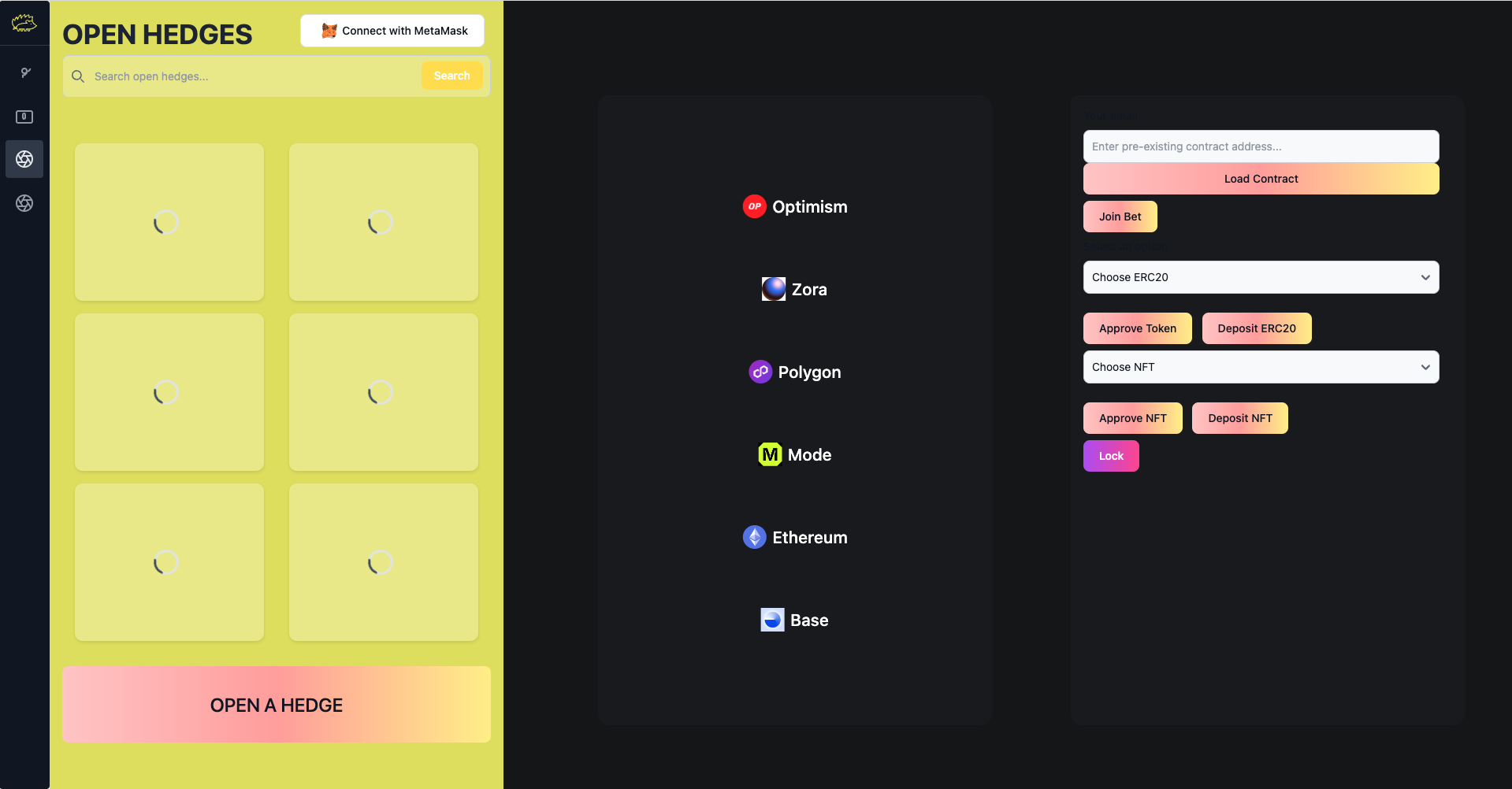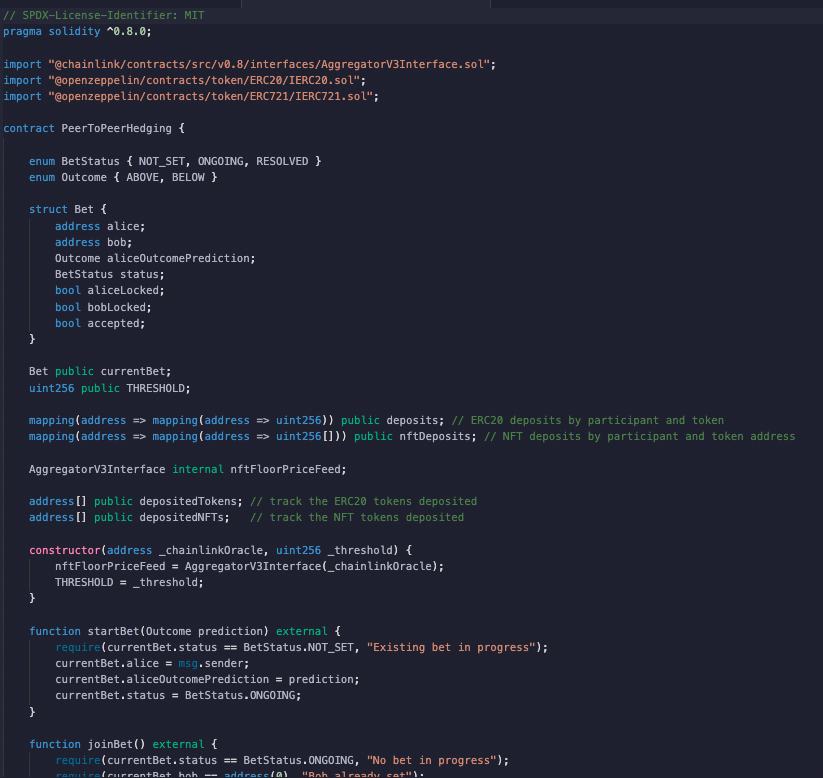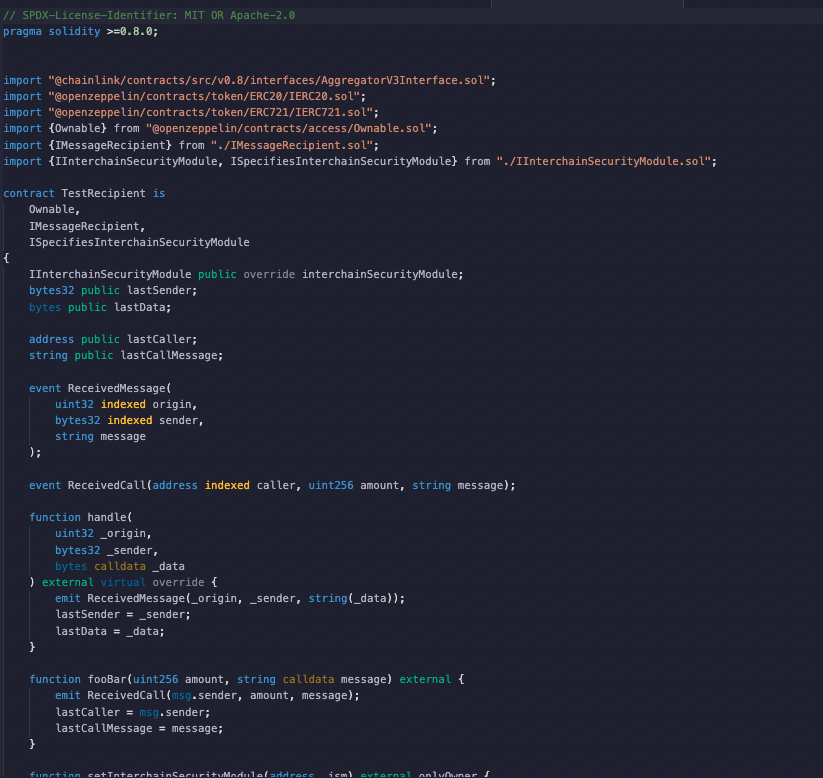Hedgehog Protocol
The Hedgehog Protocol allows for peer to peer hedging between two users. There are two implementations. It is chain agnostic, and works with any EVM compatible blockchain.
Project Description
Introduction The Hedgehog Protocol enables direct hedging between two users across different EVM-compatible blockchains. With its dual implementations, it's designed to be chain-agnostic and can be further expanded for non-EVM chains. As of now, our frontend supports chains like Mode, Base, Optimism, Polygon, Ethereum, and Zora.
Addressing Trust in the Digital Age A prevalent challenge in today's society is the absence of trust. The Hedgehog Protocol addresses this by ensuring that all transactions and logic are executed transparently on the blockchain. This decentralization eliminates the need for intermediaries, ensuring users get their due payout after a bet.
How it's Made
How it Works Imagine Alice speculates that Bitcoin's price in 2024 will surpass 40,000 USD, but Bob disagrees. Both can stake any amount of ERC20 tokens or NFTs as collateral in our holding contract. After mutual agreement on the collateral, either party or even a third-party can invoke the resolve function when the bet concludes, transferring the total collateral to the victor.
Price Resolution Mechanism The protocol primarily uses Chainlink's data feed oracles for price resolutions. This offers aggregated prices from various sources for Price Feeds, NFT floor prices, and Index prices. In situations where Chainlink's feeds aren't suitable, we pivot to UMA's optimistic oracle. This setup heavily incentivizes participants to confirm the authenticity of a statement, addressing concerns related to single data source vulnerabilities.
Cross-Chain Functionality Our cross-chain implementation is adaptable, supporting any standard cross-chain messaging protocol. In our current design, we've leveraged Hyperlane, primarily due to the straightforward nature of its Mailbox contracts.
Here's the beauty of this cross-chain operation: Since EVM addresses remain consistent across chains, a user like Alice retains her address identity whether she's on ChainA or ChainB. This consistency allows Alice to deposit assets on ChainA, while Bob does the same on ChainB. If Alice emerges as the winner, her assets on ChainA get returned to her ChainA address, and the assets on ChainB are sent to her ChainB address—without any cross-chain asset movement.
For this communication across chains, we use Hyperlane's messaging. A simple trigger on one chain, like a user invoking the locked() function, gets communicated to the counterpart chain, facilitating this seamless cross-chain bet resolution.





